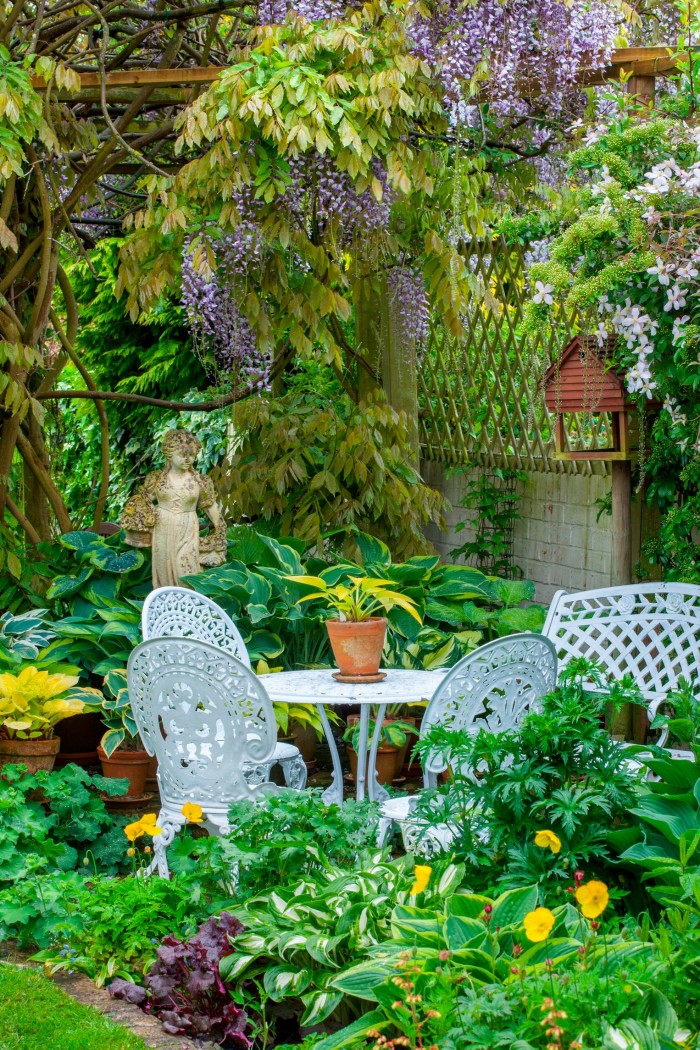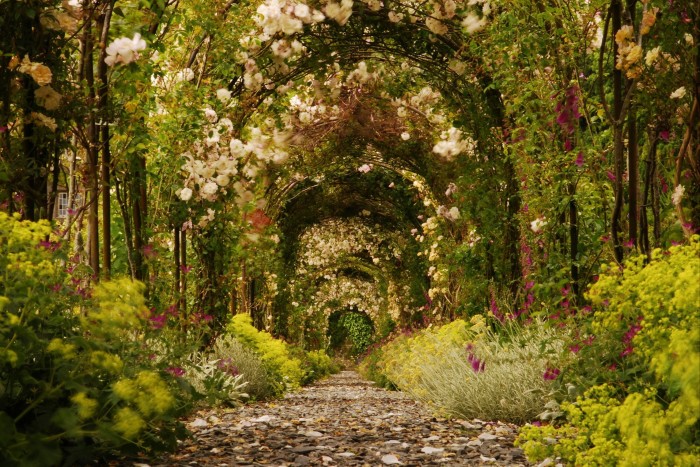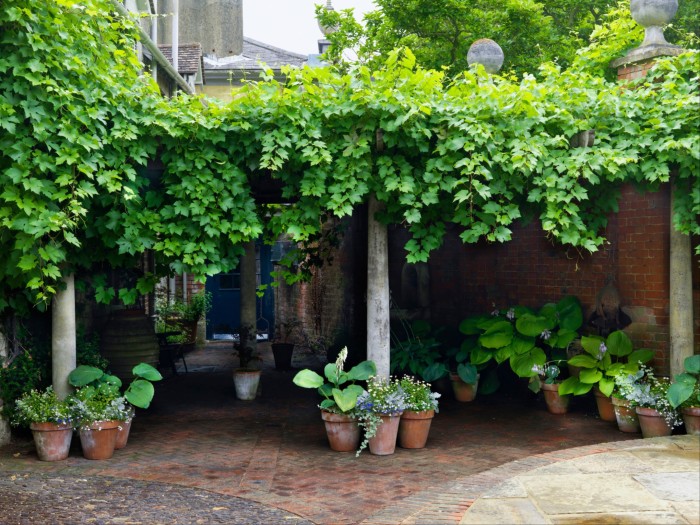Shady characters: what to plant for a cool garden refuge

Roula Khalaf, Editor of the FT, selects her favourite stories in this weekly newsletter.
Planting to create shade has not historically been a priority for gardeners in the cool climes of northern Europe, but with hotter summers and the intense glare of midsummer sun it may be worth a rethink. A dreary winter punctuated by prolonged cold snaps and a cooler than average spring may have left us pining for a hit of sunshine, but a few weeks into a long hot summer can quickly find us seeking shade.
The Met Office forecasts that 2023 will be the 10th successive year that average temperatures reach at least 1C above pre-industrial levels — and that this year will see higher temperatures than 2022 due to the end of the climate pattern La Niña, which had a temporary cooling effect. In the same way that we now slap on sunscreen instead of tanning oil, maybe eating alfresco, reading and relaxing outside are best enjoyed under a dense green canopy that casts some shade and provides protection.
Pergolas and loggias are often associated with summer dining in the Mediterranean or the spacious grounds of grand country house hotels — such as the Grade I-listed garden at Hotel Endsleigh in Devon, where a tunnel of rose archways provides a shady promenade on sunny days.
But pergolas of all sizes and sophistication, like patios and terraces, can make an attractive visual link between a house and garden while fulfilling a useful function. A wooden, metal or even partially stone framework is constructed over which leafy, cooling climbing plants are trained. Wood is the preferable material as metal can absorb heat from the sun, scorching the young tendrils of climbers.

The key to success lies in choosing plants to fit your ambition and conditions. Deciduous climbers provide shade in the summer while allowing light through during the winter months, when warmth and brightness are encouraged. Grape vines have long been trained over horizontal frames: they are fast growing and the twisting stems of mature specimens provide structural winter interest once the generously proportioned leaves have dropped.
Vines that produce dessert grapes have the appeal of abundant foliage and a delicious late summer crop. The sunnier and warmer your site the better as they require well-drained soil and initially regular watering. The RHS ran an Award of Garden Merit trial in 2021, working with Sarah Bell of Sunnybank Vine Nursery in Herefordshire, selecting the best outdoor eating grapes.
Vitis Reliance is a seedless white or blush variety described in its report as “hardy, vigorous and reliable, with good disease resistance and nice big leaves”. For a very hardy and early ripening black grape, Vitis Sovereign Coronation would be a sound choice. On a more challenging site, for
example one that is further north or at higher altitude, Bell recommends Vitis Lakemont.
Vines climb with tenacity and pruning is a commitment, but not necessarily a lengthy task. Train the trunk up the height of the pergola, supporting it with a permanent cordon framework over the top. Bell says gardeners need “to be patient in training them up. Resist taking fruit too early as you want to get a good framework going. Usually you would do spur pruning in winter.” Growth emerges from the “spurs” in early summer.
Prune so the shoots are spaced out and trim to keep in bounds. Inspiration for training vines can be found by strolling under the extensive vine archway in the Edwardian Formal Garden at Powis Castle in Wales.
Wisteria is an opulent and altogether more fragrant option, its long pendulous flower clusters looking wonderful draped over a pergola. The perfumed blooms are most commonly pale lilac but pastel pink, white and dark purple forms are also available. Flowers appear between April and June, followed by a profusion of pinnate leaves.
Wisteria is vigorous and robust: the forests and tree-lined riverbanks of China are draped in lilac shrouds of Wisteria sinensis growing at least 20m tall, smothering trees and sturdy stands of bamboo. In cultivation it is constrained by available space and an annual winter and summer prune. Introduced into the UK in 1816, it has maintained popularity ever since. Choose a sunny aspect, as you’ll get less flower in partial shade and you’ll need moist, well-drained soil. Be patient and attentive while they get their roots down and settle in.
Tom Coward, head gardener at Gravetye Manor in West Sussex, the former home of Victorian visionary gardener William Robinson, has overseen the renovation of a breathtaking wisteria-clad pergola. He grows the Japanese wisteria, Wisteria floribunda Shiro noda, one of the latest whites with a beautiful scent, valuing “its colour and the fact that it never gets frosted, due to its lateness”, he says. “It works very nicely with Lupinus Noble Maiden planted underneath, like stalagmites and stalactites.” The lupins also have the benefit of shielding the wisteria’s bare stems.

One word of caution: “Wisteria often look older than they are,” says Coward, “as their sole ambition in life is to take over the entire world — and because of this careful pruning is essential.”
Fiona Butcher of Cumbria Wisteria has a no-nonsense approach: “Basically it’s safe to cut off anything you don’t want. The more you cut the more they will flower,” she says. Allow the plant to grow along the pergola, straightening out the winding tendrils before tying in with stretchy string. After a few years, when the wisteria has covered the structure, cut all new growth back to two or three buds.
Butcher recommends the floribunda cultivars as best suited to a pergola. Her top picks are Wisteria floribunda Kuchi-beni, with light pink flowers, dark purple Yae-Kokuryu, pale blue Lawrence and Multijuga for its long racemes.
But if you’re not yet ready to commit to all that pruning, you can always take tea and enjoy the shade at one of those country house hotels.
Find out about our latest stories first — follow @FTProperty on Twitter or @ft_houseandhome on Instagram

Comments